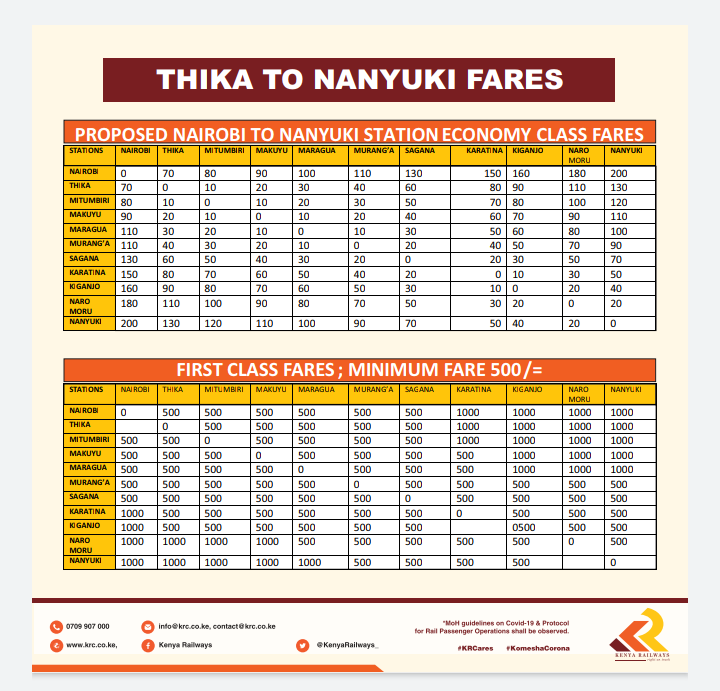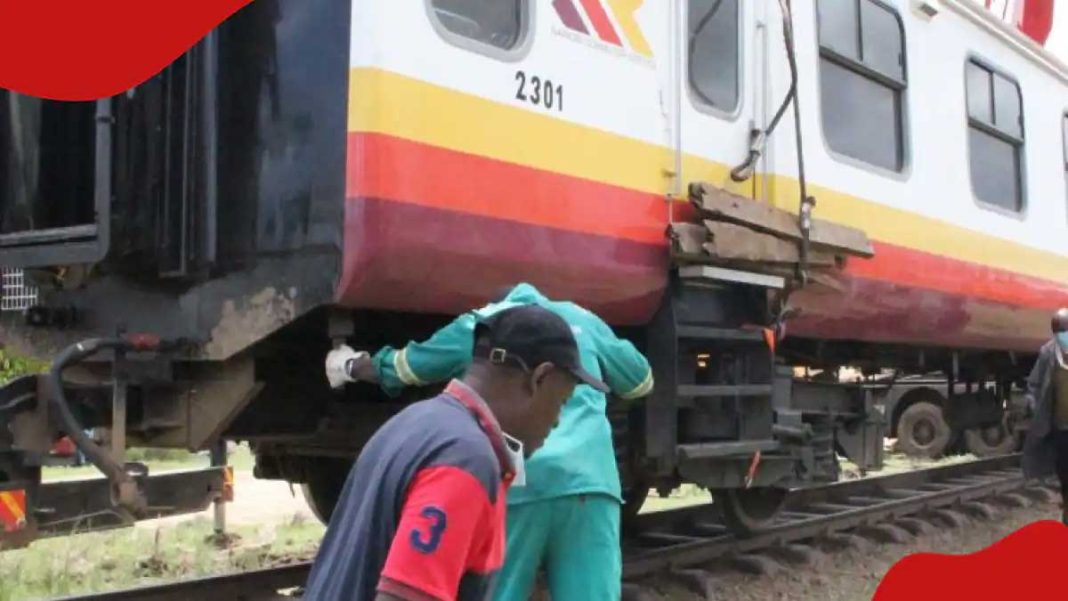The newly rehabilitated train service is providing a lifeline to residents of central Kenya. It has revived old memories that were deeply embedded in the minds of those who used this old form of transport.
Change is inevitable. Monopoly in business tends to do more harm to consumers than good.
In fact monopoly is attributed to, price fixing regardless of demand, declining product quality, loss of innovation and inflation.
Matatu operators plying the Nairobi – Nanyuki Highway have long since enjoyed monopoly of ferrying passengers and goods.
This has changed after the national government decided to shake things up by introducing a cheaper and efficient form of transport.
The Nairobi – Nanyuki train service is literally knocking out of business matatu owners.
Its becoming the most preferred mode of transport since its rehabilitation earlier this year.
From Ksh. 2000 On Road To ksh. 200
Nanyuki residents continue to enjoy cheap rides home on train as matatu owners continue to count losses.
Its estimated that over 700 people traveling to central Kenya opted to use the Train service from Nairobi – Nanyuki.
Passengers coming from either Nanyuki or Nairobi alight at different destinations along the 177 kilometer railway line. This includes Thika, Makuyu, Muranga, Sagana, Karatina, Chaka and Narumoru.
The final destination is Nanyuki/Nairobi.
The excitement among the passengers is evident despite the longer travel time. Passengers pay Ksh. 200 to travel on economy class and Ksh. 1000 to travel business class.
We went to the bus stage and found the fare had been hiked to Ksh. 2000. So we opted to use the train since the fare is fixed and not overcrowded. This is convenient for us who have big families. It has eased transport for us.
Mr Mwaura, Passenger

Beautiful Sceneries
Apart from the fair rates of transportation from Nairobi to Nanyuki and stops in between, travelers get to enjoy the beautiful scenery immersed in nature all through the journey.
For instance between Nanyuki and Karatina, passengers get a clear view of the magestic Mt. Kenya on one side and the spectacular abardare ranges on the other side.
As the train meanders the hills, passengers can see expansive plantations and rivers crisscrossing the valleys along the railway line.
This journey has been an adventure for me. I have seen lots of rivers and beautiful landscapes prompting me to take selfie photos. I have been grateful. The train has passed through places that I have never been too. And generally I have enjoyed the journey because its smooth.
Ms. Wangechi, Passenger
If you want to see nature in its full form, I’d urge you to try the Nairobi – Nanyuki train service.
The Nanyuki Bus Terminus
At the Nanyuki Bus terminus, matatus remain in their parking lots. Business is lower than the previous festive season.
Partly attributed to the corona virus pandemic. The train service escalated the situation from bad to worse.
At the train terminus cabins are full to capacity with excited passengers. The railway operators are banking on tourism to generate revenue from passenger trains.
We want to have a special economic zone tariff in this region. It will help those operating in the railway sector. Particularly those dealing with go downs for storage and movement of cargo.
Hon. John Mwaniki, Deputy Governor Laikipia
Cargo services are expected to revive collapsed industries across Mt. Kenya region. The railway corporation looks forward to generate 3.74 billion per annum from cargo and passenger services.
Best Form Of Transport
The government launched the train service to reduce the congestion on the roads. As well as offer a more affordable alternative to passengers.
At 8 am ,the train leaves Nairobi for Nanyuki arriving at 4 pm in its final destination.
The Shillings 3bn rehabilitation of the Nairobi – Nanyuki line was carried out over six months, and was executed in three sections:
- Thika – Maragua (47.6km)
- Maragua – Karatina (54.2km)
- Karatina – Nanyuki (75.4km)
The work included site clearance of the entire corridor and the removal of encroachments,
Also the rehabilitation of infrastructure and rolling stock, and the leasing of locomotives.
As well as the construction of an extension to the Vivo energy depot in Nanyuki and a new station at Chaka.
KRC contributed Shillings 1.2bn to the project, with the remaining Shillings 1.8bn provided by the state-owned Kenya Pipeline Corporation.

